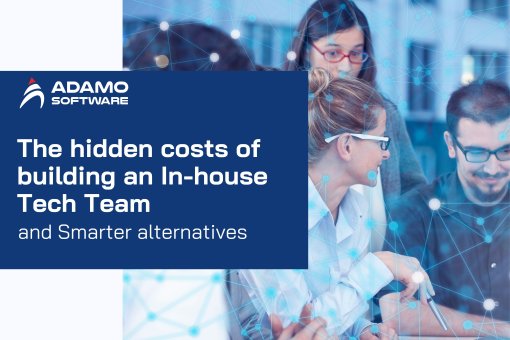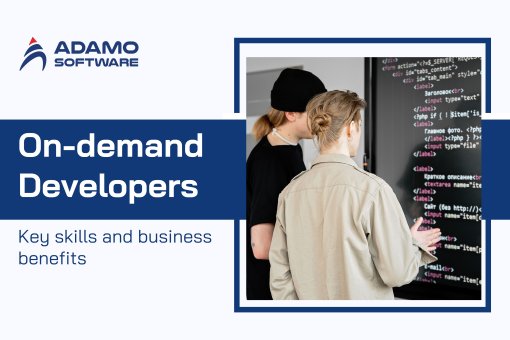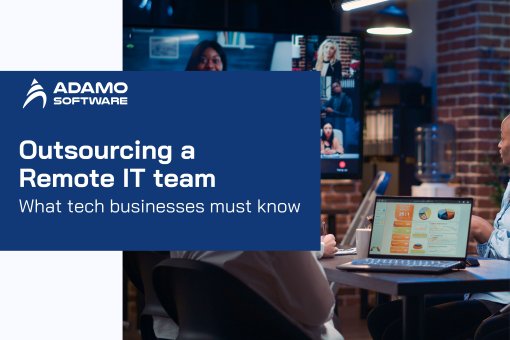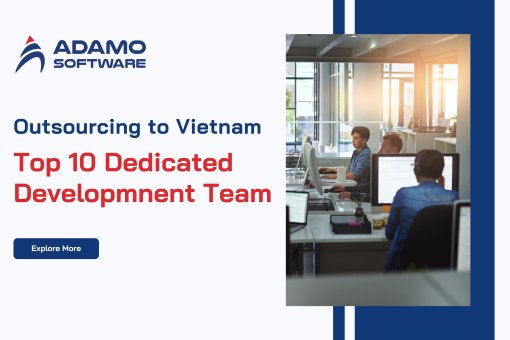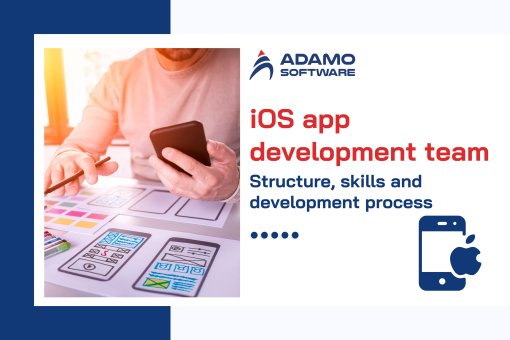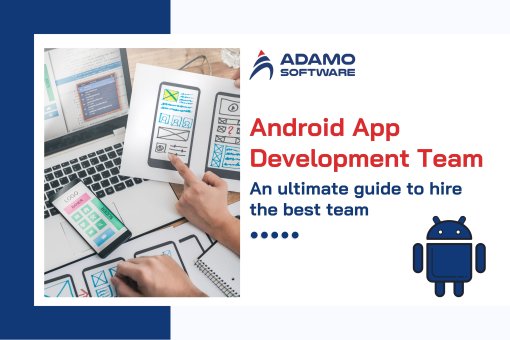AI Developer Team: Which to choose between in-house and Dedicated team
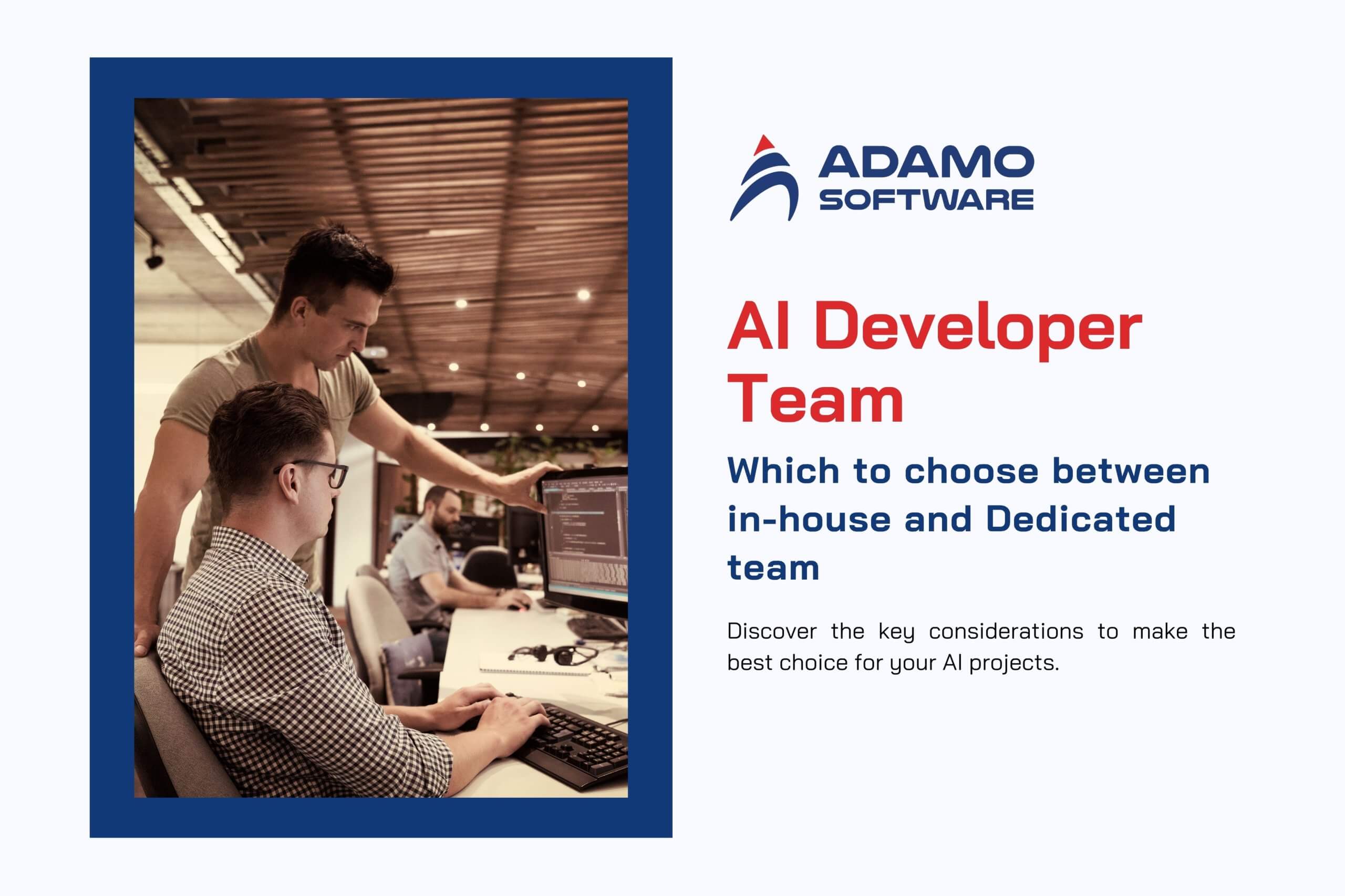
Today, building a custom software product is essential for businesses to succeed in a competitive market. To successfully implement and scale AI projects, businesses need to build a skilled development team that can tailor tools and adjust them to meet the specific requirements of the company. This AI development team should collaborate with business experts, IT professionals, and other key stakeholders to drive meaningful results from AI.
One common challenge for many businesses is deciding between building an in-house team or hiring dedicated developers. Both of these development approaches are viable and have their advantages and disadvantages.
In this blog, we will look at some key aspects to consider when choosing between these two options and helping you choose the right development team to create a unique solution for your company.
I. What is an AI developer team?
An AI developer team is a group of IT professionals working within a company. They work together to design, implement, and monitor artificial intelligence solutions that deliver value to the organization. The overall goal of an AI developer team is to realize the enormous benefits of AI, whether it is improving efficiency, automating routine tasks that enhance customer experience, or extracting meaningful insights from data.
Effective teamwork and leveraging each member’s unique expertise are key to creating a successful AI developer team. Businesses can address challenges and deliver solutions that support the organization’s strategic goals by bringing together experts from business intelligence, machine learning, natural language processing, deep learning, and generative AI.
Typically, an AI developer team will have positions such as project managers, data scientists, AI engineers, and machine learning experts. Every team member plays a vital role in the development process, from preparing data and developing and training AI models to deploying solutions and ensuring their long-term success.
II. In-house or dedicated AI developer team: What is better for your business?
You know what an AI developer team is, but which collaboration model should you choose between in-house and dedicated? Choosing between the two models is not easy for many companies, especially small businesses or startups. Hiring an AI developer team depends on the organization’s unique needs and underlying business culture. If you’re unsure which model to choose, explore both to determine which is best for your business.

1. Dedicated teams
The dedicated team model entails partnering with an external IT staffing provider to source AI developers who possess the specific skills and experience required for your project. This model is ideal if you know how to manage an external development team and want to leverage their expertise on-demand, saving you the cost of retaining full-time employees.
This model also exposes your company to a broader range of industry expertise, especially remote AI developers around the globe.
2. In-house teams
An in-house AI developer team will work on a long-term contract for your company. This model will give you an advantage in quality and consistency in your brand messaging because they understand your corporate culture and all your business needs and goals. This model is geared towards long-term commitment and can help you oversee advanced AI projects until completion or deploy multiple projects over time.
→ Overall, hiring a dedicated team of AI developers can benefit you in the long run if you want to optimize development costs and stay current with global trends and innovations. That defines a high-potential organization, especially in an era where efficiency is the key to success, flexibility and cost savings.
III. Costs breakdown: In-house vs outsourced AI developer team
1. Personnel costs
It is anticipated that by 2034, the demand for tech talent in the U.S. will grow to 7.1 million positions, up from approximately six million in 2023. Despite significant layoffs in the sector in 2023, the unemployment rate among tech workers is still significantly lower than the overall workforce.
What does this mean for your business? Increased demand for IT staff means higher costs.
For an in-house AI developer team, you’ll need to factor in the significant salaries of skilled AI developers and data scientists, especially in tech hubs like Silicon Valley. Additionally, you’ll need to budget for other support staff, including HR, IT, administrative support, and other non-technical positions.
What other personnel costs might come with an in-house AI developer team?
- health insurance (medical, dental, and vision)
- retirement plans including 401(k) contributions
- stock options
- bonuses
- paid time off
- AI training courses and certifications
An outsourced AI development team follows a distinct financial model. You will be paid on a contract basis, either a fixed price or an hourly rate, often lower than an in-house salary, especially if the work is outsourced to countries with lower labor costs. Payment may also be based on milestones linked to the completion of specific project phases.
Unlike in-house teams, dedicated outsourcing teams do not require direct benefits from the client, as the outsourcing company will manage health insurance and retirement plans. In addition, the responsibility for training and development costs also falls on the supplier, not the customer. Recruitment costs will also significantly be reduced as the outsourcing partner handles the recruitment.
2. Infrastructure Costs
Technology and IT infrastructure are other major cost drivers in AI development. By 2029, the market is expected to reach $183.57 billion, growing at a CAGR of 9.32%. However, infrastructure costs also differ significantly between in-house and outsourced AI development teams.
If you are building an in-house AI team, you will likely consider making a significant investment in hardware. This includes powerful servers and high-performance computers needed to train complex AI models. This can already be quite expensive. In addition, you will need to invest in additional networking equipment, such as routers and switches, to ensure smooth connectivity and robust data storage solutions, including on-site storage and backup systems.
Additionally, software costs range from licenses for development environments and collaboration tools to security software to protect your data. Then, there are cloud hosting services. While in-house infrastructure is available, cloud-based computing resources for training and deploying AI models are often indispensable, along with storage and data transfer costs.
Don’t forget to invest in ongoing learning, with courses, certifications, and conferences needed to keep your AI developer team ahead of the AI curve. Additionally, your AI developer team will need physical office space, utilities, and maintenance, which can be significant due to the cooling and power requirements of high-performance computing. In addition, there are the day-to-day running costs of running an office, from furniture and office supplies to IT support and maintenance staff.
Alternatively, you may want to consider setting up a dedicated AI developer team off-site to save on infrastructure costs. The scenario will change dramatically. The need for expensive on-premises hardware will be reduced, with the main workstations taking over as the outsourced service provider handles the heavy computing and storage upgrades. Additionally, software costs will be streamlined. They are often bundled into the service fee provided by the outsourcing company, including the development tools and security software required. Cloud hosting services, a significant cost in in-house setup, will be managed and included in the outsourcing contract.
Facility and infrastructure costs will be drastically reduced as the need for physical office space, utilities, and maintenance will significantly reduce. With fewer on-site employees, furniture, office supplies and IT support costs will also be reduced considerably.
Let’s crunch the numbers: for an in-house AI developer team, annual costs can range from $150,000 to $480,000 per employee, including hardware, software, cloud services, and office-related expenses. By contrast, outsourcing a dedicated team can be much more cost-effective, with total annual costs ranging from $70,000 to $220,000 per full-time equivalent employee, including service fees and minimal on-premises costs.
3. Operational costs
According to a Goldman Sachs prediction, big tech companies will spend more than $1 trillion on AI over the next five years. But it’s not just big tech companies investing in AI. The global AI market is expected to reach $826 billion by 2030.
While the market figures are staggering, the operational costs of maintaining in-house AI developer teams can be huge. Costs like salaries, overhead, and infrastructure add up quickly. You’ll also need to allocate resources for utilities and facilities, training and development, as well as security and compliance for your in-house teams.

4. Time to market
The process of recruiting and training top talent can take 3 to 6 months. This investment is aimed at creating a unit that is deeply embedded in the company’s identity and a team that promises long-term stability but requires patience from the start.
Once the AI development team is established, the development phase begins. This phase typically lasts 6 to 12 months, but this path is not without its obstacles. Internal bottlenecks and learning curves in advanced technology can slow down progress. This extends the total time to complete an internal project to 9 to 18 months, which is a testament to nurturing internal capabilities.
In sharp contrast, outsourcing AI software development provides a faster alternative. The initial setup is quick, taking only 1 to 3 months to go live and coordinate with an outsourcing partner. Its advantages lie in its access to specialized talent and workflows that accelerate the development phase. Additionally, outsourced teams with scalable resources and honed expertise can shorten development time to 4 to 8 months.
The key to an effective go-to-market is seamless communication and meticulous coordination throughout the project lifecycle. As a result, the total time to complete an outsourced AI development project is typically 5 to 11 months, significantly reduced compared to their in-house counterparts.
Deciding between an in-house and outsourced AI development team is a strategic choice that weighs control, speed, and market needs. In-house development teams can provide effective alignment with internal goals and values, fostering deep integration with the company culture. However, they require initial investment and patience for the team to bond and hone their skills.
IV. How Adamo finds dedicated development team for your AI product

At Adamo, we make finding the ideal development team for your AI project straightforward and effective. Here’s how our process works to ensure you get the expertise you need:
1. Defining Your Technical Requirements
We start by understanding your project’s specific needs. Based on these, we connect you with highly skilled engineers from our network, carefully selected through AI assessments, interviews, and technical evaluations. This means you’re matched with talent that’s ready to hit the ground running.
2. Interviewing the Candidates
Once we identify the best candidates for your project, we introduce them to you, free of charge. Each candidate is chosen based on the skill sets you require, and you’ll have the opportunity to interview and assess their fit with your team and project goals.
3. Streamlined Onboarding
After you make your selection, we handle the onboarding process, integrating the developer seamlessly with your team. Adamo takes care of all employment details, including HR, payroll, pension, and other associated costs, so you can focus entirely on your project.
By working with Adamo, you’re supported every step of the way to ensure your AI product is developed with the right talent and a smooth onboarding process.
FAQs
1. How do I choose the right outsourced AI development team?
When you outsource AI projects, finding the right development team is important. Evaluate factors such as work style fit, industry experience, portfolio and case studies, referrals, project management methodology, and development approach. It is important to outline your goals and requirements before you start so you can better assess what you need from a development partner.
2. What are the risks associated with AI development?
Several risks are associated with AI development, such as security concerns, data privacy, potential bias, and challenges integrating AI solutions with existing systems. You should be strategic from vendor selection to post-implementation to combat these obstacles. This includes carefully evaluating vendors, clearly defining objectives, creating contractual agreements, conducting risk assessments, establishing communication channels, and implementing quality control measures.
3. How do you ensure the quality of the outsourced AI work?
The most important thing for AI developers from outsourcing companies is to ensure the quality of their work. Key strategies include:
- Providing clear and detailed project specifications.
- Planning effective communication.
- Implementing quality control processes.
- Conducting process reviews.
Regular software testing and validation, setting KPIs and performance metrics, and detailed documentation are also important.
4. How do you handle data privacy and security when outsourcing AI development?
To handle data privacy and security in AI projects, we implement a variety of measures and contingencies. These include strict access controls and data encryption. We also adhere to strict NDAS, international data privacy standards, and regulations such as GDPR.
5. Who retains the intellectual property rights of the developed application?
We always ensure that the client owns the developed application’s intellectual property (IP), regardless of the team members or technology involved in the process.
6. How long does it take to develop an AI solution?
The time it takes to develop an AI solution can vary from a few weeks to a few months or longer. This depends on many factors, such as project requirements, developer experience, data availability, and complexity.






